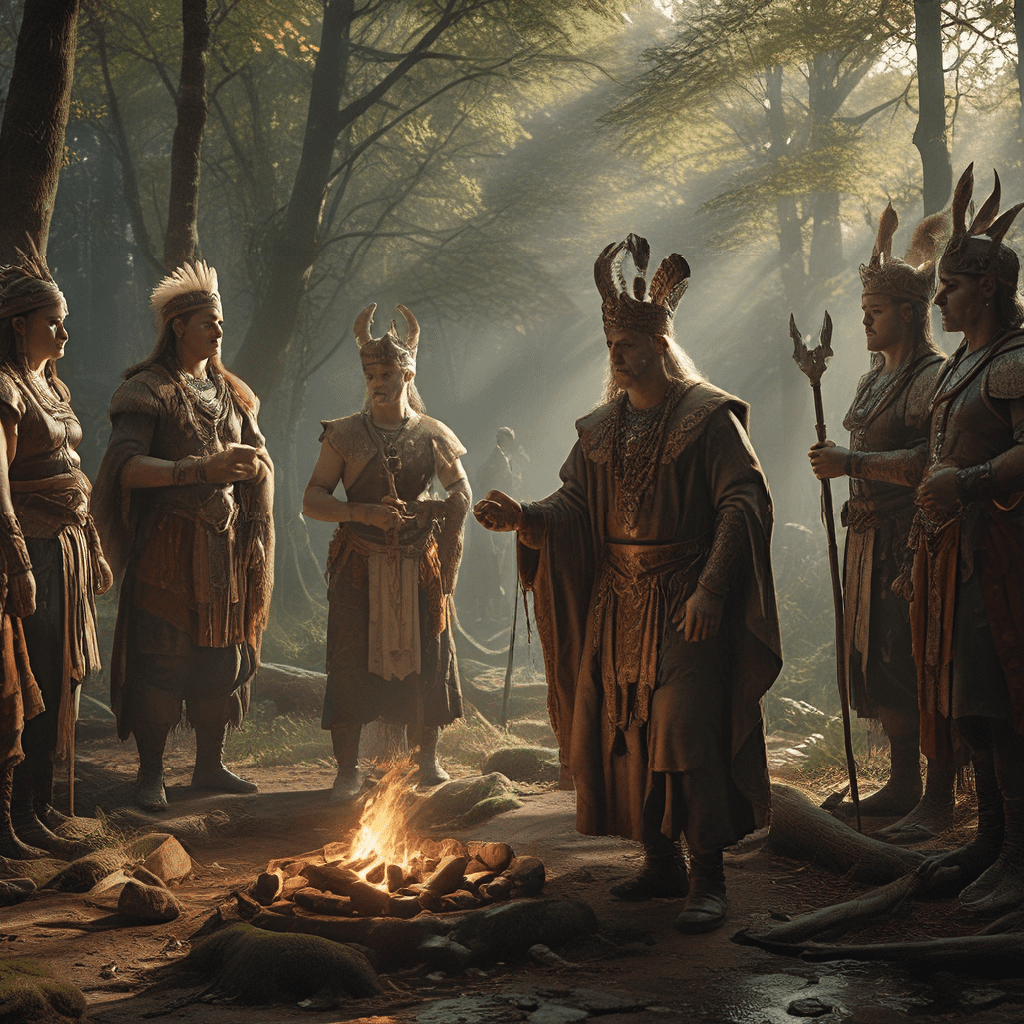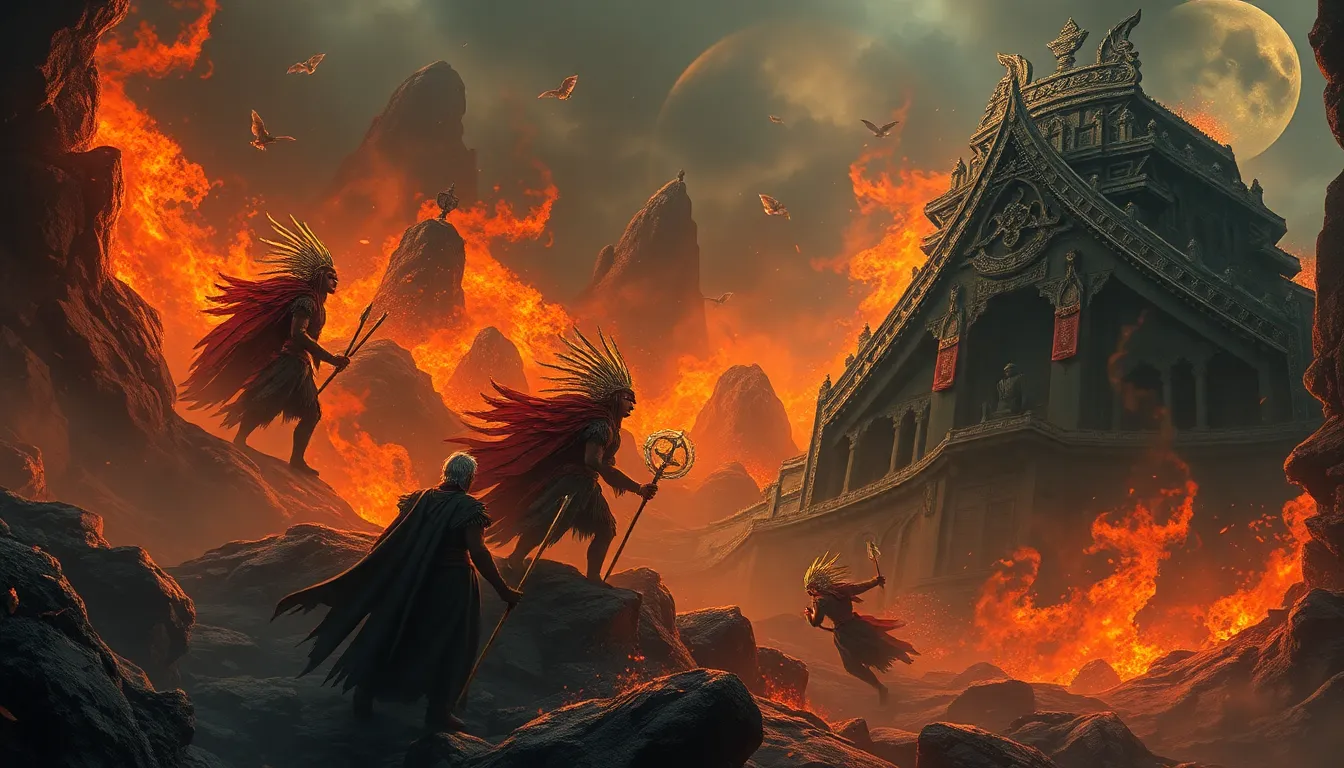Baltic Mythology: A World Shaped by Ritual
In the realm of Baltic mythology, rituals and ceremonies played a central role in shaping the lives and beliefs of the people. These traditions weren't just empty gestures; they were believed to be vital for maintaining cosmic order, influencing the natural world, and ensuring the well-being of the community. Every aspect of life, from birth to death, was intertwined with rituals, which served as a tangible connection to the divine forces that governed the universe.
The Role of Rituals in Maintaining Cosmic Order
Baltic mythology was deeply concerned with the delicate balance of forces that governed the universe. The gods, the spirits, and the natural world were all seen as interconnected, and rituals were essential for maintaining harmony and preventing chaos. By performing these acts of worship and appeasement, the people sought to secure the favor of the gods, ensure good harvests, and protect themselves from harm. These rituals were not just symbolic gestures; they were believed to have real power to influence the world around them.
Key Rituals and Ceremonies: A Glimpse into Baltic Belief
The diverse array of rituals and ceremonies practiced by the Baltic people provides valuable insight into their beliefs and values. Their ceremonies were often linked to the cycles of nature, such as the changing seasons, the phases of the moon, and the fertility of the land. Some key rituals included:
- Offering sacrifices: The Balts offered sacrifices to appease the gods and seek their favor. These sacrifices included animals, crops, and even human sacrifices in rare cases.
- Celebrating festivals: Special ceremonies were held to celebrate important events like the solstices, the equinoxes, and the harvest. These festivals involved feasting, dancing, singing, and rituals intended to honor the gods and ensure the continued prosperity of the community.
- Performing divination: The Balts sought guidance from the gods through divination, using various methods like interpreting dreams, reading animal entrails, or observing the flight of birds. These rituals helped them make decisions and understand the will of the divine.
The Significance of Sacrifice in Baltic Mythology
Sacrifice formed an integral part of Baltic rituals, symbolizing the willingness to give something of value to appease the gods and secure their favor. The most common sacrifices involved animals, especially livestock such as cattle, sheep, and pigs. However, in rare cases, human sacrifice might also be offered during times of great crisis or to appease powerful deities. These sacrifices were not seen as a mere act of cruelty but as a necessary offering to maintain the balance of cosmic forces.
The Ritual Calendar: Celebrating the Cycles of Nature
The Baltic people lived in close harmony with nature, and their rituals mirrored the rhythms of the natural world. The year was divided into a series of festivals, each linked to a specific season and its accompanying agricultural activities. This ritual calendar served as a guide for the community, marking times of planting, harvesting, and celebrating the bounty of the earth. The cyclical nature of these rituals reinforced the interconnectedness of the people with the environment and the gods who governed it. These festivals provided a sense of collective identity, strengthening community bonds, and reminding them of their dependence on the forces of nature.
Feasts and Celebrations: Honoring the Gods and Ancestors
Baltic feasts and celebrations were woven into the fabric of everyday life, serving as more than just opportunities for merriment. These gatherings were sacred occasions, where the community came together to honor the gods and ancestors, seek their blessings, and reinforce their bond with the divine. Feasts were often held during significant events like the harvest festivals, weddings, and funerals. These gatherings included abundant food and drink, music, dancing, and storytelling. The stories recounted during these celebrations often featured heroic tales of gods, mythical creatures, and ancestral heroes, solidifying the collective memory and cultural identity of the people.
Rituals of Transition: Birth, Marriage, and Death
The Balts recognized that life was a journey marked by significant transitions, and rituals were crucial for guiding individuals and communities through these pivotal moments. Birth, marriage, and death were not merely biological events but were embedded within a complex web of beliefs and practices.
- Birth: The arrival of a newborn was a cause for celebration but also required careful rituals to ensure the child's safety and well-being. A child's birth was seen as a critical moment for establishing a connection with the spirit world, and rituals were performed to protect the infant from harm and ensure their safe passage into the world.
- Marriage: Marriage was a sacred union, not only between two individuals but also between two families and their ancestors. Weddings were elaborate ceremonies involving feasting, dancing, and symbolic rituals aimed at bringing good fortune to the new couple.
- Death: Death was seen as a transition to a different realm, and rituals were designed to guide the dead soul to a peaceful afterlife. These rituals involved elaborate funeral ceremonies, burying the deceased with personal belongings, and offering food and drink to the spirits of the departed. The purpose was to ensure a smooth transition and prevent the spirit from becoming restless and causing harm to the living.
The Power of Incantations and Spells: Shaping Reality through Words
The Balts believed in the power of words to influence the world around them. Incantations, spells, and prayers were an integral part of their rituals, used to communicate with the gods, spirits, and even the elements themselves. These verbal formulas were often accompanied by gestures, offerings, and specific actions, intended to enhance their efficacy.
- Spells: Spells were used to influence the natural world, such as ensuring a bountiful harvest, healing the sick, or warding off evil spirits.
- Incantations: Incantations were often used to summon spirits or invoke the power of the gods.
- Prayers: Prayers were used to request favor, protection, or guidance from the divine.
These words were not just spoken; they were believed to carry a potent energy that could shape reality. The power of these incantations and spells rested in their ability to harness the energy of the divine and direct it towards a specific outcome.
Theories on the Evolution of Baltic Rituals
The origins and evolution of Baltic rituals remain a subject of ongoing academic debate. Some scholars believe that the rituals were rooted in ancient Indo-European traditions, while others argue for a stronger influence from neighboring cultures.
- Indo-European Origins: The Indo-European hypothesis suggests that many Baltic rituals and beliefs share common roots with other Indo-European groups, such as the Greeks, Romans, and Celts. These shared elements include the belief in a pantheon of gods, the practice of sacrifice, and the importance of divination.
- Neighboring Influences: Other scholars emphasize the influence of neighboring cultures, particularly the Finnic and Slavic peoples, on Baltic traditions. This includes borrowing elements like shamanistic practices, fertility rites, and ancestor worship.
Regardless of their exact origins, Baltic rituals clearly demonstrate the profound influence of religious beliefs and mythology on the lives of the people.
The Influence of Baltic Rituals on Modern Baltic Culture
Although the ancient practice of Baltic mythology has largely faded from daily life, remnants of these ancient rituals and beliefs are still evident in modern Baltic culture. Some examples include:
- Folklore and Mythology: Elements of Baltic mythology continue to influence traditional stories, songs, and folklore, providing insights into the beliefs and values of the people.
- Folk Festivals: Modern festivals, like the Midsummer Night's Eve celebrations, still retain echoes of ancient rituals and traditions, such as bonfires, dancing, and the celebration of nature's bounty.
- Language: Baltic languages, particularly Latvian and Lithuanian, retain a rich vocabulary related to ancient rituals, gods, and mythical creatures, serving as a testament to the enduring influence of these traditions.
- Art and Handicrafts: Baltic art and handicrafts often feature motifs drawn from ancient mythology, such as stylized figures of gods, animals, and other symbolic imagery.
The influence of Baltic rituals and beliefs extends beyond these tangible examples. They continue to shape the cultural identity of the Baltic people, offering a sense of continuity and connection to their ancestors and their unique heritage.
FAQs:
Q: Were human sacrifices common in Baltic mythology?
A: While human sacrifices were part of Baltic mythology, they were not common. They were usually reserved for times of great crisis or to appease powerful deities. Often, animal sacrifices were used as a substitute.
Q: Are there any modern-day practitioners of Baltic mythology?
**A: ** While there are no organized religious groups dedicated to the practice of Baltic mythology, there are individuals and groups who are interested in reviving and reinterpreting these ancient traditions.
Q: How did Baltic rituals differ from other European cultures?
A: Baltic rituals shared similarities with other European cultures, particularly in their focus on the natural world, the pantheon of gods, and the practice of sacrifice. However, they also had unique features that distinguished them, such as their emphasis on the power of words and incantations, their rituals surrounding fire and water, and their specific beliefs about fertility and death.



